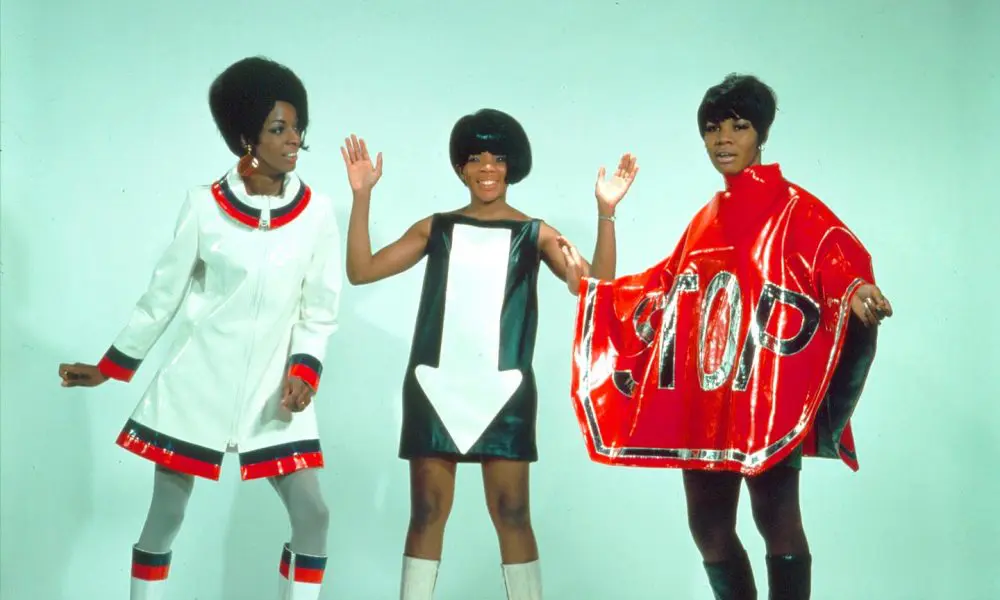‘Dancing In The Street’: Behind Martha Reeves And The Vandellas’ Song
Both a euphoric floor-filler and a call to arms, the song remains a prime example of Motown’s 60s pop perfection.

It’s often described as a political statement; a sign of America’s mid-60s uprising that was driven by inequality and the fight for civil rights, but “Dancing In The Street” was not sung by a religious leader or a nascent Black Panther. It was sung by Martha And The Vandellas, three hard-working young women from Detroit. And while it has become associated with the era’s unrest, it was not entirely a statement about the issue.
Martha And The Vandellas came out of nowhere to make some of the most vital music of the 60s. Motown always did better with comparatively inexperienced artists, because they could be molded by the backroom team to fit the creative environment that was Motown’s Hitsville studio. The Vandellas had issued two singles under various names and line-ups before they arrived at the company. “I came over to Motown with a group called The Del-Phis,” Martha recalled. “We were told they weren’t taking any more auditions at the time – it was like, don’t call them, they’ll call us.
“One of my jobs at the time was making [demos] of songs for artists, and one was for Mary Wells, who didn’t show up for her session – luckily for me, because they took the track and it became our first release, ‘I’ll Have To Let Him Go.’ I think it sold about three copies… and we bought all three! Then it was ‘Come And Get These Memories,’ and, from then on, it was Top 20, Top 10. We got spoiled.”
Spoiled, indeed. Motown’s writers, including Holland-Dozier-Holland (“Heatwave,” “Quicksand,” “Nowhere To Run”), and William “Mickey” Stevenson and Ivy Joe Hunter (“Wild One”) furnished Martha and co with some of the greatest dancefloor soul of the 60s. Supreme among them was “Dancing In The Street,” written by Stevenson and Marvin Gaye, with additions by Hunter. Gaye claimed he gave The Vandellas their name when they sang on his first hit, “Stubborn Kind Of Fellow,” joking that they sounded like vandals, though Martha says the name combined the local Van Dyke Street and her favorite vocalist, Della Reese. Mickey Stevenson was also connected to Reeves; she had been his secretary-PA before she found fame.
Reeves later said of her “Street” anthem: “This was a very bad time all over the US. We were just starting to have different confusions in cities – riots and what-have-you. Because of this, the writers were inspired to get people to dance and be happy in the streets instead of the riots. The record was put out in September, by the way. You’d think, time-wise, it wasn’t good, because the record says ʻSummer’s here,’ but it was already fall, though I think everybody got the message.”
Officially, “Dancing In the Street” was released on Motown’s Gordy imprint on July 31, 1964, but it was a hit in the autumn, reaching No.2. Stevenson had been prompted to write it when he saw kids in the street opening hydrants to cool off; when the water shot out of them and people leapt in and out of it, they looked like they were dancing. Co-writer Gaye thought the song should match its subject matter and urged him to pick up its sluggish tempo.
The political implications of “Dancing In The Street,” much like those of another Civil Rights anthem, Aaron Neville’s “Tell It Like It Is,” were implied rather than explicit. When black activist H. Rap Brown, of the Student Nonviolent Coordinating Committee, began playing it while organizing demonstrations, the song acquired a lasting political subtext, which Reeves denied in public during the 60s, though she was privately aware of its potential interpretation. It was fun, it was art, it gathered a deeper meaning, all of which makes “Dancing In The Street” 60s pop perfection.
Listen to the best of Martha And The Vandellas on Apple Music and Spotify.













Howard
August 2, 2023 at 8:48 pm
I follow Linda Ronstadt on FB, and fans there adore “Heat Wave.” Apparently she performed it often in concert. It’s a fine rendition, BUT—NOTHING compares to the frenetic energy of the original by Martha and the Vandellas.